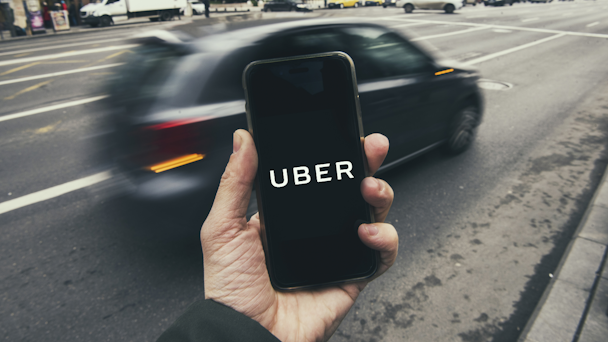Do you deliver? Uber’s CX legacy and what this means for other brands
Uber hasn’t been without its controversies, but at a very basic level it has profoundly shaped consumer expectations. As part of The Drum’s Deep Dive into The New Customer Experience Economy, Somo’s Rebecca Crook explains how this app continues to transform how brands interact with customers.

Other brands must learn from Uber’s CX / Adobe Stock
10 years ago, you wouldn’t have thought the simple act of calling a cab in London was ripe for disruption. Call cab, take cab, pay for cab – that’s all there was to it. That is until Uber decided to transform the taxi service.
First, it removed uncertainty – you don’t just know the driver’s on their way, you can see them. Then it took the pain out of paying with an app that did the job for you. It even made it cheaper, not just through competitive pricing but by organizing ride shares with none of the hassle. Fast forward to now, and Uber is again responding to changes in consumer behaviors as people look for greener ways to travel, by pledging millions of pounds to boost London’s electric vehicles (EV) charging network after launching Uber Green last year.
Critics argued that this kind of easy access, friction-free experience would be reductive. It would limit choice, not expand it. But Uber and its ilk have found a way to bring variety to that frictionless experience, more recently with Uber and its Explore feature. Using favorite places or a pre-populated destination, the Explore function combines offers, personalized recommendations and various leisure category listings – complete with the all-important reviews – to give users a one-stop shop view of where to go, how to get there and what they can do once there.
Despite protests about our privacy, we’re happy to give away our data if it means our lives feel enhanced by authentic personalization and intuitive service. This seems to be the key to delivering on CX today, paired with a heady mix of frictionless access, with the potential for wide choice and deep insight. And above all, by asking the question, ‘why not?’
Uber’s impact on banking
Once upon a time banking apps couldn’t track transactions in real time, or categorize them by outlet, spend type and portion of budget – then customers asked, ‘why not?’ Enter Monzo, Revolut and Starling. They all swooped at the chance to answer, while the legacy banks sat on their hands thinking there was nothing to be learned from how a new taxi service app that was helping its customers connect with drivers faster could help them deliver better digital experiences to their customers.
It pays to look outside of your sector, because the new behaviors customers are learning from other services impacts what your customers expect from you. If you’re a retailer, customers might be inclined to ask why does your delivery take five working days when Amazon can have it at their door the same evening? If you’re a utility or travel brand, customers might ask why it takes so long for a refund request to be resolved, when the likes of Uber Eats or Deliveroo can offer a near-instant reimbursement for missing or wrong items that were delivered five minutes ago?
And what about those food delivery apps? They have been totally overhauled during the last five years – and even more so since the pandemic. No more looking for outdated takeaway menus in kitchen drawers, and then phoning and waiting with no insight into the progress of your meal, and then having to pay in cash when you went to pick it up or if you were lucky enough to get it delivered (for an extra charge, of course). Now, you’re given everything but a front row seat in the restaurant kitchen while your food is being prepped because of the transparency of progress given on these apps. You can sometimes even see your driver doing laps around the restaurant if they’ve arrived too early and are waiting for your order.
Companies such as Uber may have set expectations, but until those expectations can be met across the board, there will be a kind of CX whiplash. Consumers continue to be catapulted from the 21st century back into the customer service dark ages, sometimes in a single interaction. It’s not enough to have a sexy app that tracks cars and crowds, or hooks grocers up with rapid delivery bikes. The frictionless, personalized ‘one-swipe’ experience has to add up across the board. Brands are going to have to look at the problem from multiple angles if we’re going to have our (rapidly-delivered) cake and eat it.
Rebecca Crook, chief growth officer at digital product agency, Somo (part of the CI&T family).
For more on The New Customer Experience Economy, check out The Drum’s latest Deep Dive.
